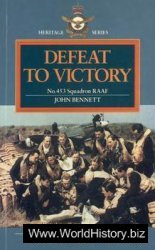Mid-19th century American women in the countryside and in the cities were eager to learn of fashion trends. European, especially French, style dominated fashion. One of the most popular features of women’s magazines were fashion plates, illustrations of the latest styles of clothing. Some of the most popular magazines of the mid-19th century, like Godey’s Lady’s Book, Harper’s Bazaar, and Frank Leslie’s Gazette of Fashion, focused most if not all of their attention on fashion. Despite the great popularity of these publications, the extent to which these fashion dictates were followed in 19th-century America depended largely on economics and geography.
In the 19th century men’s fashions, which received less public notice or press attention than women’s fashions did, underwent a significant change. In earlier eras, fashionable men’s clothing was as showy and decorative as women’s, but by the mid-19th century, men’s fashions had settled into a more staid and somber appearance. The standard costume for America’s gentlemen from the 1850s through the 1860s included a redingote or frock coat (long, tailored jackets with wide, sometimes rolled lapels, and flared hems), usually worn over a fitted vest. Trousers were worn long and over boots. By the 1870s the big transformation in men’s clothing was the rise in popularity of the sack coat, a less-fitted option to the tailored lines of the redingote and frock coat for the “modern man.” But tailored or not, not all men wore the typical gentleman’s outfit. Slaves, as well as working men in American cities and farms, had costumes more appropriate to the daily rigors of butchering, manufacturing, blacksmithing, and plowing —coarser, more hard-wearing fabrics, bibbed trousers, and loose shirts were more conducive to their daily labors.
Also, the westward movement of American settlers and entrepreneurs brought to men’s clothing the “Western style” more suitable to life on the frontier. Leather trousers and shirts and hard-wearing fabrics were necessities for trappers, miners, railroad workers, and frontier settlers.
While men’s clothing became more somber over the 19th century, upper-middle-class women’s fashion continued to be fanciful and decorated. Mainstream fashion for women before the Civil War dictated in physical appearance a slight, rounded, submissive figure. The ideal female, according to portrayals in lithographs, journals, and fiction, was dark-haired with a small oval-shaped face, a soft chin, cupid bow lips, pale white skin, and a frail and delicate physique. According to the ideal, a woman’s hands and feet were delicate and tapered and no part of her body should be strong or forceful. Even her movements and posture were to be curved and bent.
Clothing emphasized these physical ideals. Dresses created a curved, bell-shaped figure, with the overall appearance of a triangle from the tiny hats or hair ornaments trailing outward, with the interruption of a tiny, cinched-in waist, to a wide, belled-out hem. Necklines were wide and rounded. The waist was tightly constricted by using corsets that could be tightened by stays that tied in the back. In contrast to the small waist, skirts were long, touching the floor, and were capacious, using yards of fabric. In 1856 hoops, metal frames worn under the skirt to enhance its fullness, came into fashion. Despite its weight, the hoop was considered a fashion boon for women because it replaced the innumerable layers of crinoline petticoats that were even heavier and more restrictive of movement. In the 1860s skirts were at their widest, held out by a few layers of crinoline underskirts over the hoop. With her hoop, the well-dressed woman wore a shawl, rather than a coat. Women were counseled by Godey’s to wear their shawls to their best advantage—generally to be seen as if they were just putting the shawl on, which ostensibly gave the most pleasing presentation of perfect, rounded shoulders.
After the Civil War, the ideal silhouette changed. Harper’s Bazaar counseled women in 1875 that the “ideal at present is the greatest possible flatness and straightness: a woman is a pencil covered with raiment.” Clothes were tighter fitting in the front with a bustle in the back, beginning a trend away from voluminous skirts. The rising popularity of bustles created in the 1870s a distorted appearance of women’s posture—pushing the bust up, flattening the front of the woman’s figure from the bust down to the feet, and swaying out the woman’s back in an exaggerated bubble of crinolines and bows.
Alongside the ideal fashion was a range of alternatives for women that largely hinged on the geography and economic position of the women involved. Like men, women of the working classes invented their own styles to meet

Woman and girl in fashionable clothing, 1862 (Library of Congress)
Their needs. Some working women had strict constraints about the fashions available to them; for instance, women working in U. S. textile mills were forbidden from wearing hoops because they posed a danger around the manufacturing machinery. Rural and frontier women were also generally hoopless and bustleless and made clothing of sturdy, wearable fabrics including canvas, muslin, and calico. The 1870s saw the rise of paper-pattern publication and the ever-increasing availability of sewing machines for women of most economic levels, thus allowing women across the expanding nation to fashion their own versions of the magazine ideals.
Notwithstanding the general acceptance of the “ideal” figure and fashion for women in the mid-19th century, mainstream women’s fashion did have its detractors. From the 1820s through the end of the 19th century, the United States had a burgeoning “dress reform movement.” Feminists and health reformers criticized fashion trends and advocated less restrictive clothing for women. They were largely concerned about the harmful health effects of cinching at the waist, which constricted breathing, and of the impact of the heavy underskirts. Also, feminists argued for a less gender-segregated fashion standard. Reformers advocated the shortened dress with long pantaloons (to be cut like men’s trousers) for women; the outfit generally became known as the “bloomer costume.” One of the health publications of the day, the Wa-fer-Cure Journal summed up reform attitudes and poked fun at the restrictiveness of the ideal for women’s attire in 1853 with a bit of verse:
To breathe, or not to breathe; that’s the question Whether ’tis nobler in the mind to suffer The slings and arrows of outrageous fashion,
Or to bear the scoffs and ridicule of those Who despise the Bloomer dresses.
A coalition of dress reformers formed the National Dress Reform Association (NDRA), which met for the first time in New York in 1856. The NDRA used their association magazine, The Sybil: A Review of the Tastes, Errors and Fashions of Society, to promote their campaign on the health aspects of the bloomer costume. By 1866, however, the NDRA had dispersed, and support for the bloomer movement was dwindling.
See also MARRIAGE AND FAMILY LIFE; WOMEN’S STATUS AND RIGHTS.
Further reading: Stella Blum, ed., Victorian Fashions and Costumes from Harper’s Bazaar, 1867-1898 (New York: Dover Publications, 1974); Gayle V. Fischer, Pantaloons & Power: A Nineteenth-Century Dress Reform in the United States (Kent, Ohio: Kent State University Press, 2001); Robert Kunciov, ed., Mr Godey’s Ladies: Being a Mosaic of Fashions & Fancies (Princeton, N. J.: Pyne Press, 1971); Joan L. Severa, Dressed for the Photographer: Ordinary Americans and Fashion, 1840-1900 (Kent, Ohio: Kent State University Press, 1995); Estelle Ansley Worrell, American Costume, 1840-1920 (Harrisburg, Pa.: Stackpole Books, 1979).




 World History
World History









